Barking When Left Alone
Of all dog behavior problems, perhaps the most distressing one is the dog who barks when left alone. Incessant volleys of yips, woofs and whines are an irritant to those who live in close quarters or for those who need some peace and quiet in their life! These latchkey barkers fit several profiles. It is important to determine which one or more describes your dog; misreading the dog may result in a failure to extinguish the problem.

Virtually all terriers and many small dogs, particularly Maltese, Poodles and miniature Schnauzers, fit into this category. These breed types have been pre-programmed to bark at movement or noise within their range. Sensitive alarm barkers once bred to alert the farmer of the fox in the hen house now announce that the phone is ringing, the neighbors are home or that the elevator has arrived. They must be trained to limit their barking. Training them to bark on command gives you control; you can turn it “on” or “off” on your orders! It’s not that you don’t want them to bark; you just want them to be appropriate. Find a suitable place or time where the yappy dog can bark to his heart’s content.
2. The Alpha/Territorial
These barkers are most often unneutered males and/or guarding breed types. They believe that they are protecting their yard, house and general “air-space” from intruders such as the mailman, a squirrel, a passing dog or a neighbor. Neutering may take the overprotective and/or territorial edge off the intact dog. Training will get the genetically protective dogs’ instincts in line. Blocking the dog’s view of the property lines (stockade instead of chain-link fencing) and keeping him from patrolling the area around the front door or front porch may assist in cutting down the owner-absent barking. Monitor this type of dog carefully; do not permit him to bark at passersby when you are home. If you cannot silence him when you are there, you can’t expect much when you’re not.
3. The Demanding Barker
This confident soul does not want to be left alone because the fun stops. He stands at the door and commands you to return to play with him. Both barking set-ups (explained below) and engaging toys work well to quiet this imp’s demands, as does the citronella anti-bark collar.
4. The Bored Underexercised
Sporting, hound and herding breed types were bred to work all day long. Many retrievers, pointers, setters, collies and the like now find themselves sadly under-exercised, especially in the urban environment. These dogs need to be kept busy. If not, boredom turns into barking (not to mention chewing, pacing and digging). Most need at least two hours of vigorous, aerobic exercise a day. If you are going to be gone for an extended period of time (over six hours,) an hour of mentally challenging and physically active fun and games is mandatory. You should leave behind a panting, heaving, utterly exhausted dog as you set off for the day. Offering them breakfast from a stuffed KongTM or food-dispensing toy can also keep them busy.
5. The Fearful, Anxious Dog
Some of these dogs fall into the category of toy and miniature breed types. Dogs that have been passed around from home to home and shelter rescues also fit into this group. Their histories may include coddling and over-protective handling, lack of proper socialization or isolation. Dogs that have never been out of the back yard or permanently paper trained apartment dwellers are candidates for anxiety behaviors if placed in a new home environment. These dogs suffer from separation anxiety when left behind, even for brief periods. Chewing, barking, house soiling and digging at doors or window sills are some typical responses. The majority of these dogs need to be properly socialized to the world around them. Obedience work with plenty of praise builds confidence, yielding a more stable dog; a dog with a better ability to cope.
Environmental Changes to Minimize Owner Absent
The anxious dog may feel less stressed-out when home alone if he’s confined to a kennel crate either the enclosed airline type (molded plastic) or a wire crate draped with a sheet or a tablecloth. With less space to worry about just the bed and a chew toy many dogs just curl up and calm down. A word of warning regarding dogs with severe anxiety problems (often a rescue/shelter dog): some dogs may go to pieces in a crate; they will shake, slobber, struggle and exhibit extreme escape behavior. In these instances you must seek the counsel of a professional dog trainer or applied animal behaviorist who is well versed in canine behavior problems and can customize a program for the dog that may include short-term drug therapy.
Barking Set-Ups
Keep the dog in the quietest part of the house. A dog with behavior problems has not earned “the run of the house”.
Keep curtains and/or shades drawn. If you don’t have adequate window coverage, get some; hang a sheet or blanket across the window. A darker environment has a calming effect on most dogs. Additionally, there is no visual stimuli to provoke the territorial or bored dog. Curtains muffle sounds from the outdoors for alarm barkers.
Leave a radio or TV on as white noise. In many households, the stereo/TV/radio is on from morning ’til night as long as someone is home. Imagine how “loud” the silence is when everyone is gone and the sound system is turned off! Beyond masking outside noises, leaving the stereo/TV/radio on gives the aural appearance of your presence.
As you leave, give the dog an “only-when-I’m-gone” chew toy with your scent imparted on it. This toy should be something spectacular – a sterilized beef bone stuffed deeply and thoroughly with canned dog food or cheese spread (served frozen or chilled), a flavorful beef-basted knotted rawhide bone, or a stuffed KongTM. Give it to the dog upon leaving; rub it between your palms several times before you go. Not only is this a diversion tactic, it actually makes being left alone not so bad, as this is the only time the “most-wonderful-thing-in-the-world” appears!
If you have tried all of the above and you are still finding notes from your neighbors, you must desensitize the dog to your departures with “barking set-ups.” Set-ups take time; slow incremental progress is a necessary part of the program. Be prepared to use a long week-end or some vacation time for the program.
First, imitate your daily departure routine. Do you usually put on make-up, search about for keys, gloves, etc. pack a gym bag or throw out the garbage? Make the dog think that this is just like any other daily departure.
Second, while giving him his special goodbye toy, get eye contact and tell him in a firm and matter-of-fact manner to be quiet until you return. Please, no longwinded emotional scenes; no begging, pleading or whining for him to be quiet. It will only serve to emotionally charge the situation and further stress-out the dog.
Leave for a brief period of time. Just a minute or two to start out with. If you wait for an elevator, ring for it and get in. Go one floor down and come back up using the stairs. Wait 1-2 minutes. If the dog has not barked, return and gently praise. If you hear him begin to bark, mark the behavior by a sharp rap on the door with a solid object like a brass key ring and start timing again. Each time the dog barks, rap on the door and set the timer back to zero. It may take a half hour to get 1-2 minutes of silence. When you do, go in and praise. Leave 15-30 minutes later and repeat.
The goal, of course, is to be able to stay away for longer and longer periods of time without having to correct the dog for barking. The time away must be built up in small intervals. Set goals ( 5, 10, 15 minutes) and go back in and praise the dog if he remained quiet for the set amount of time. Don’t wait for an undetermined amount of time and correct the dog for finally barking. Silence must be praised. Appropriate behavior must be acknowledged.
Most dogs who can remain silent for two hours can usually stay quiet for an 8 to 10 hour work day. It is building up to that first hour or so that may take several days of set-ups to achieve. Barking problems are rarely solved in a day.
Barking set-ups can be tedious, but they usually work if you take the time to do them properly. Let your neighbors know that you are not ignoring their complaints; that you understand their discomfort and you are taking steps to correct the problem. Quite often, they will cut you a little slack if they know that their complaints have not fallen upon deaf ears.
10 Best Dog Beaches in the U.S.A

Here’s a rundown of 10 of the best dog beaches our American pooches enjoy.
The West Coast
1. Huntington Dog Beach, Huntington Beach, Calif.
Nestled along the picturesque Pacific Coast Highway in Orange County, just south of Los Angeles, all manner of canines romp in the waves and shake sand on their owners at Huntington Dog Beach. This is an official dog beach, with its own service board that maintains the beach and refills the poop bag dispensers. Hillsides and the terrain surrounding the beach create a natural barrier between dogs and traffic, creating a perfect spot for friendly pooches to chase balls and sometimes ride the waves on surfboards. This is Surf City, after all.
Andrea Servadio, co-founder of Fitdog Sports Club in Santa Monica, Calif., takes her 4-year-old Jack Russell Terrier, Brecken, to the Huntington Dog Beach year-round.
“Brecken gets excited even before we get there,” Servadio says. “He immediately darts towards the water and has a huge smile on his face the whole time.”
2. Coronado Dog Beach, Coronado, Calif.
“All dogs go to heaven, but before they go, they should visit Coronado Dog Beach,” says Will Kearney, a pet adventure blogger from Chicago, and owner of a seaside-loving 2-year-old Rhodesian Ridgeback named Mr. Eko. “The beach is gorgeous, and the only thing friendlier than the people are the dogs.”
Coronado Dog Beach is another San Diego treasure, located on the north end of Coronado Beach, which in 2012 was ranked by Dr. Beach as the best beach in the United States. Wet dogs and soggy tennis balls fly past beachgoers, and your furry beach bum can even take a surfing lesson from the Coronado Surfing Academy.
The long walk toward the water can get hot on bare feet in the summer, but the stretch acts as a safety barrier between dogs and cars, and at the end of the day, there’s a foot and dog washing station where the sand meets the parking lot.
“There’s great camaraderie between the dogs,” says Ashley Torresala of San Diego, owner of Zia, a 4-year-oldFinnish Spitz who loves the water. “For some reason, they’re all in the mindset of sharing toys and including others in their play in a way I don’t typically see in a dog park setting.”
If dogs roam outside of the dog beach boundary, owners are subject to a $500 fine, though Kearney says police are more likely to hand out belly rubs than tickets.
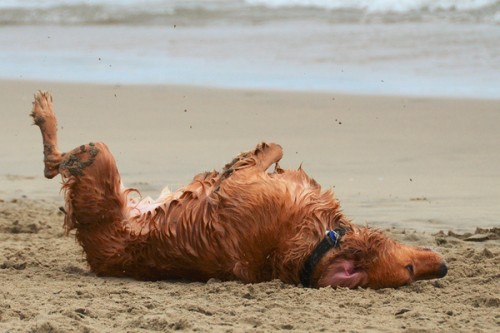
The Midwest
3. Montrose Dog Beach, Chicago
The Midwest is not known for its beaches, but it is known for its lakes and its love of dogs. Combine the two and you get Montrose Dog Beach on Lake Michigan in Uptown Chicago, a haven for landlocked dogs and their owners. A fence separates dogs from the traffic except toward the south end of the beach, but it is large enough so that owners can stay clear of that spot until dogs are on leash. Be careful, however, and be sure your dog responds reliably to recall commands. Otherwise, you might find yourself chasing your dog down busy Lake Shore Drive.
This beach draws a lot of bigger dogs, so small dog owners may want to take caution. It is crowded in the summer, and diehards claim that the best time to visit is in the winter, when there are fewer people and the dogs seem to be better behaved.
All dogs using the beach are required to have a “Dog Friendly Area” tag purchased from a veterinarian for $5, showing that a dog is healthy and up to date on vaccinations.
The South
4. The Dog Beach of Hollywood, Hollywood, Fla.
Tropical doggie heaven spans the space between two orange safety cones on the pristine white beach in Hollywood, Fla., just north of Miami, where dogs splash in the warm turquoise water of the Atlantic Ocean. Sand dunes act as a natural barrier between the dogs and the parking lot as hounds sniff the shore and terriers dig holes in the sand. The beach is wide, with no commercial activity nearby. The regulars are friendly, and there’s always shade under the palm trees.
Bridgette King, a resident of Hollywood and regular at The Dog Beach of Hollywood, says that her 3-year-old Poodle, Dolce, isn’t a swimmer, but loves to dig.
“When we pull up to the parking lot, her tail starts wagging like crazy,” King says. “She’s sometimes a little hard to catch when it’s time to go home.”
5. Jupiter Beach, Jupiter, Fla.
Two-and-a-half miles of pawprints dot the sand in Jupiter, Fla., from north of the Juno Beach lifeguard area to south of Carlin Park’s lifeguard area. Because of the beach’s beauty, 30 of Jupiter Beach’s residents didn’t want to keep it all to themselves, so in 1994 they privately funded poop bag stations and installed some common-sense rules so that the beach would stay tidy and fun for both dogs and owners. Today the organization is 5,100 dog lovers strong, keeping the beach clean and safe for everyone.Dogs laze under the sea grape trees and doggie paddle in the crystal blue water, as owners watch them from beach chairs under colorful umbrellas.
“This is the best dog beach in the U.S. because we have an endless summer, the people are chill and friendly, and the dogs are well-behaved and cheerful,” says Julie Rodrigues, resident of Jupiter and owner of Bristol, a 4-year-old exuberant Pointer-mix. “There is no worry of altercations between the pups, and if there are any, they are easily resolved. You just walk on and enjoy the sunshine.”
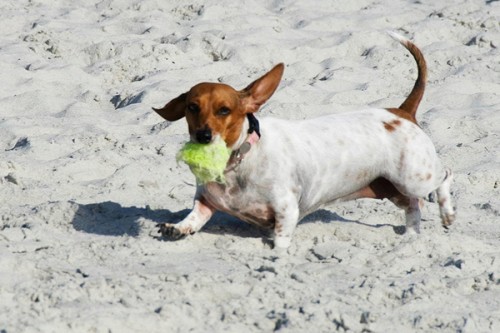
Twelve miles long and over 100 spacious feet wide, this Brunswick Island beach is off-leash playville for salty dogs in the morning hours, though leashed dogs are welcome any time. Out of the hustle and bustle of everyday life, this dog-friendly beach boasts long stretches of sandy dunes that will make Fido believe he has gone back to a simpler time. This south-facing beach features calmer water than other beaches in the area, and since dogs are allowed off leash during the offseason, you might find yourself alone with your pooch during the chillier months, when the beach is all yours!”The first thing I felt when visiting this beach was a feeling of open space and beautiful landscape,” says Rebecca Magee of Waxhaw, N.C., who owns Molly, a 7-year-old Labrador Retriever-Rhodesian Ridgeback mix who loves the shore. “Everyone has their own room to set up, and the dogs are friendly and play together on the sand and in the water.”
The Northeast
7. Wiborg Beach, East Hampton, N.Y.
It’s the privileged canine who paddles the waters of Wiborg Beach in East Hampton, N.Y., the playground of the rich and famous. Manhattanites abandon the concrete canyons on summer weekends for the place where the water meets the shore — with their dogs in tow, of course.
Residents of the bungalows and mansions that dot the beach have free access to it, but visitors must purchase seasonal passes, which are capped at a certain number so that the beach is rarely crowded.
“It’s an afterthought to realize that the conversation you have had with the unnamed person who has admired your dog is Candice Bergen or Martha Stewart,” says Roy Cohen, an author from New York City and East Hampton, and owner of Oskar, a 3-year-old Labrador Retriever-Poodle mix. “Two summers ago, former President Bill Clinton was stopped by a local police officer for walking his dog in-season and off leash after hours.”
Of course, dogs don’t care that the people on the beach are hedge fund titans, Oscar-winning actors, or former presidents — they just care about that tennis ball in your hand.
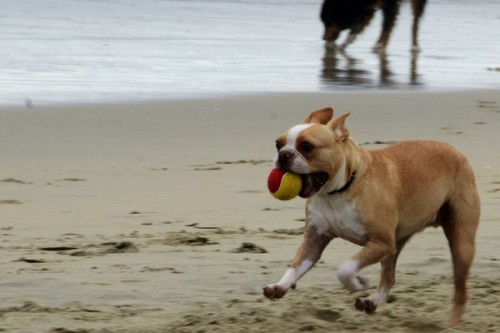
The 3,346-foot long beach with a funny name draws dog lovers to its talcum powder sand from all over the area and as far away as Boston, including former First Lady Barbara Bush and her dogs. Outcroppings of rock and crashing waves make this shoreline unique — as does the 9-foot high tide, which engulfs the beach until it recedes. Summer homes line the clamshell-sprinkled beach, which has plenty of sticks for playing fetch.
“I’m not sure who enjoys it more, the people or the dogs,” says Brooke Sheldon of Kennebunkport, Maine, owner of Bradbury, a 6-month-old Golden Retriever. “Many people know each other by their dogs’ names, not necessarily the person’s.”
The Northwest
9. Howarth Park, Everett, Wash.
This 28-acre park features an off-leash dog beach that’s spacious when the tide is out, so residents watch the tide tables for the perfect time to take Fido for a splash. The sounds of seals and dogs barking over Puget Sound, geese to chase, and friendly dog owners make this pebbly beach a destination. Your dog must have a solid recall due to train tracks nearby.
“There are tons of things to explore, smell, roll on, and climb on,” says Kimberly Gauthier, a blogger forwww.keepthetailwagging.com//ital// from Marysville, Wash., and owner of three water-loving tail-waggers; Rodrigo, a 3-year-old Australian Cattle Dog-Border Collie mix, Sydney, a 3-year-old Australian Cattle Dog-Labrador Retriever mix, and Blue, a 1-year-old Australian Sheperd-Australian Cattle Dog mix. “The morning is a big game of chase on the beach, and they love it.”
10. Yaquina Bay State Recreation Site, Newport, Ore.
Just west of Highway 101 in Newport, Ore., you’ll find a bow-wow beachfront that’s a little too cold for people-paddling, but most dogs aren’t deterred by the chilly temps. Any Oregonian will tell you not to turn your back on the ocean, so keep your eye on the tides and your dog.
“It’s hard to beat this combo of easy access, lots of room, no fees, and beautiful views,” says Rachel Beck, a resident of Eugene, Ore., and owner of Tessa, a 6-year-old Beagle, and Bond, a 7-year-old mixed-breed dog. “Dogs don’t care about swimsuit bodies or umbrella drinks, and neither of those things are on display on the Oregon Coast.”
Nine Ways to Prevent Canine Cancer
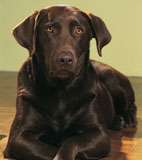
Provide only pure water. Tap water can contain chemicals such as lead, arsenic, and nitrates. Holistic vets strongly advise using a good-quality water purifier to filter your tap water. If you decide to buy a water purifier, keep in mind that although initially costlier than bottled water, it is much cheaper in the long run, costing only pennies a gallon, says Dr. Pitcairn. You may also decide to use bottled or distilled water. Pure water flushes toxins from the body and contributes to the feeling of well-being, says Dr. Goldstein.
Avoid contaminated water. Keep your pet away from street puddles, which can contain cancer-causing toxins such as hydrocarbons and asbestos dust from brakes.
If your pet already has cancer, avoid all vaccinations. Vaccinations can stress your pet’s immune system. For cancer patients, at the very least, avoid vaccinations during treatment because they may counteract any positive and immune-enhancing effects of your home-support program, says Dr. Goldstein. Ask your vet about the homeopathic remedy Thuja occidentalis 30C, which may remove the immune-suppressing effects of vaccinations.
Avoid indoor pollution. Keep your pet away from cigarette smoke. Studies show that secondhand smoke contains hundreds of toxic chemicals that can cause lung cancer in humans. Research also shows a strong correlation between secondhand smoke and oral cancer (squamous cell carcinoma) in cats. In dogs it’s associated with nasal sinus cancer, and even lymphoma, although the connection is weaker. The more people who smoke around a pet, the more at risk the animal is.
Ventilate your house well to reduce indoor air pollution. Grow houseplants that filter the air, such as philodendrons, spider plants, aloe vera, chrysanthemums, and gerbera daisies, but keep the plants out of your pets’ reach. Don’t use harsh chemicals such as pesticides and household cleaners around the house. Seek out natural products, such as vinegar and baking soda.
Keep your dog’s weight under control. Obese dogs are prone not only to cancer but heart ailments, joint problems, diabetes, breathing difficulties, and more. Ask your vet what a healthy weight for your dog should be and strive to achieve it. Feed your dog a healthy diet free from artificial preservatives, artificial flavors, and dyes. A healthy, balanced diet supports your dog’s natural defenses against cancer.
Use natural flea products on your dog.Did you know that flea collars, sprays, and shampoos are full of poisons? Instead of chemical insecticides, use natural and less-toxic methods of flea control such as natural flea shampoos, vacuuming frequently, and combing your pet with a flea comb. Pyrethrins are a natural and safe means of flea control, but need to be applied frequently. D-limonen and other citrus-based methods can be used in dogs, however, avoid D-limonen in cats, as it is toxic to them. Putting borates, salt, or diatomaceous earth into carpet or cracks between the wall and floor is effective for indoor flea control.
Do not allow your pet to ride in the back of a pickup truck.Along with the danger of being thrown out of the truck, your pet will be susceptible to inhaling toxic car fumes and smog. Let your dog get fresh air either by way of a park, beach, or your backyard.
Keep your dog away from pesticides and herbicides on lawns and plants.A report by the National Cancer Institute found that dogs whose owners used weed-killing products containing 2,4-D (2,4-Dichlorophenoxyzcetic Acid) had twice the rate of lymphoma as dogs whose owners did not use it. Cocoa mulch is also dangerous to dogs.
Stay clear of house and garden pesticides. Get rid of pesky insects naturally or seek out the least-toxic products. There are also nontoxic, organic products available.
Keep your pet stress-free.Stress is emotional imbalance caused by anger, frustration, or anxiety. These emotions overwork the liver, where they can stagnate and create tumors, according to Dr. Schwartz.
High anxiety in pets happens for a variety of reasons: neglect, a multiple animal household, an owner going away on vacation, or an owner going through a divorce. Whatever triggers stress in your dog, tune in and help your pet chill out.
Try some de-stressing methods such as: maintaining a regular pet routine (including feeding times and playtimes); massaging your pet; being in tune to your pet’s needs; looking for stress signals (from appetite changes to excessive barking); keeping peace in a multipet household; and providing tender loving care.
Exercise your dog on a regular basis.Research shows that canine fitness not only strengthens immunity to chronic disease such as cancer, but is also essential for optimal health and well-being.
Sustained, vigorous use of the muscles stimulates all tissues and increases blood circulation. Blood vessels dilate and blood pressure rises. As a result, tissues become oxygenated, which helps to clean the cells of toxins. Digestive glands secrete their fluids better, and the bowels move more easily, says Dr. Pitcairn.
What’s That Smell? Tips for Tackling Dog Smells
Some dogs have a knack for getting themselves good and stinky. Here are tips for cleaning up three particularly offensive (to humans, at least) smells: skunk, dead fish, and “I don’t even want to know what you rolled in.”

Skunk: If your dog tangles with a skunk, here’s a formula that works for many dog parents:
1 quart 3% hydrogen peroxide
1/4 cup baking soda
1 teaspoon liquid soap
Use the mixture immediately (it cannot be stored in a container), while it’s bubbly, and rinse thoroughly. It may discolor fabric as well as dark colored fur.
Don’t leave the mixture on your dog more than a few minutes. Bathe and condition afterward, if you like.
Dead fish: If you spend time with your dog by a pond, lake, or beach, he may anoint himself from time to time with eau de dead fish.
Wash the worst of it off with dog shampoo and water, and rinse well. Then saturate the fishy area with lemon juice – freshly squeezed works best. Let it soak for five to ten minutes — a nice time to chat with your dog. (Don’t scold him — he’s just doing dog things that you could prevent with a leash.)
Then rinse, shampoo, and rinse again, and apply conditioner according to directions to counteract the drying effect of the lemon juice.
Icky, greasy, who-knows-what gunk: If your dog rolls in foul-smelling things he finds in the yard or on a walk, a bath with Dawn dishwashing liquid will probably remove it. Dawn is often used to clean up wildlife that has been exposed to oil and other toxic substances.
Protective Dog Breeds That Are Not German Shepherds
Dogue de Bordeaux
The Dogue de Bordeaux is a large, powerful breed. It grows to 27 inches at the shoulder and weighs up to 100 lbs. The dog has a stout, muscular body and an imposing look. It is a naturally loyal and protective breed but is not overly aggressive. It is gentle with children and its family but will not back down from a threat posed by an intruder.
Akita
The Akita is a large, powerful breed, growing to 28 inches at the shoulder. It is heavily muscled, has a thick, two-layer coat and a curled tail. It is a natural guardian and will raise the alarm loudly if it detects an intruder. The breed’s temperament can differs from dog to dog so it is not ideal for families with small children.
Bouvier des Flandres
The Bouvier des Flandres is a large breed that grows to 27 inches at the shoulder. It has a sturdy, square body type with a long, double-layer coat. It is a brave, loyal and protective breed which makes a good family companion. It requires a lot of exercise and may become too playful around small children if not supervised.
Rottweiler
The rottweiler is an imposing, muscular breed, growing to 27 inches at the shoulder. If trained well and socialized, the dog is a loving pet. It enjoys time with its family and will defend its people from strangers with intense courage. The dog needs to be introduced to new people before it will trust them.
Kuvasz
The kuvasz is a large breed that grows to 30 inches at the shoulder. It originated from Tibet and has a thick, double-layer coat. Its natural guarding instinct makes it a good flock protector and it was used for centuries to defend sheep and cattle from wild predators. It is a reserved breed and does not show huge amounts of affection, but will protect its family courageously.
Komondor
The komondor is a large breed, growing to 25 inches at the shoulder. It has a distinctive, two-layer, corded coat which looks very much like a mop. This coat protects it from the bites of other animals. It, like the kuvasz, is a livestock protector. It is loving with its family but is suspicious and defensive towards strangers.
Can Dogs Experience Jealousy?
Anyone who thinks dogs can’t feel jealousy has never met my dog. My French Bulldog, Huggs, is very well-behaved. Trained as therapy dog, he is quiet and low-key, that is until you are not paying “enough” attention to him. He is well known in the family for wanting something anytime you are doing anything else. Whether that means climbing onto your newspaper or casually leaning backwards across your lap so you can’t possibly use your laptop, making dolphin-esque noises when you stop touching him, or squeezing himself between my husband and I, he is either extraordinarily jealous, or the biggest attention-whore known to dog-kind, or both. I’ll go with both.
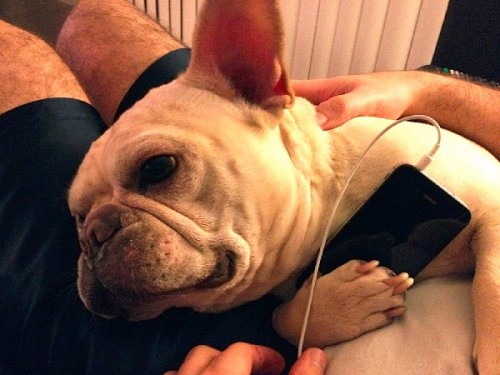
As a kid we had Simon the Lhasa Apso who was happy as can be until we introduced our second dog, a Shih Tzunamed Wally. When Simon wasn’t hiding under the bed in protest, he took to stealing things from the bedrooms and would run by tossing it in the air so everyone would come after it and away from whatever adorable thing Wally was doing. Was he jealous? If he was a kid, we probably would have sat down with him and told him that we loved him and his new brother equally and they get the same amount of attention. But if you are a first born child, you probably felt what Simon felt: that it simply wasn’t true (did I mention I’m the baby of my family?)
I actually had this discussion about dogs and jealousy with my family just the other day. The common consensus was that jealousy is a complex emotion and therefore reserved for human feeling (and squabbling,) not something dogs would concern themselves with. But a new study from PLOS ONE, might make you rethink how dogs think.
Adapting a test that has been used to determine jealous behavior in human infants, Psychologists from the University of California, San Diego researchers were able to determine that dogs do in fact feel jealous.
Researchers videotaped 36 small breed dogs reacting to their owners ignoring them and instead displaying affection to an animated, stuffed dog that barked, whined and wagged its tail. During these interactions with the plush pet, over three-quarters of the real dogs pushed or touched their owners. The dogs also made attempts to get in between the stuffed animal and the owners, or went as far as to growl at the imposter.
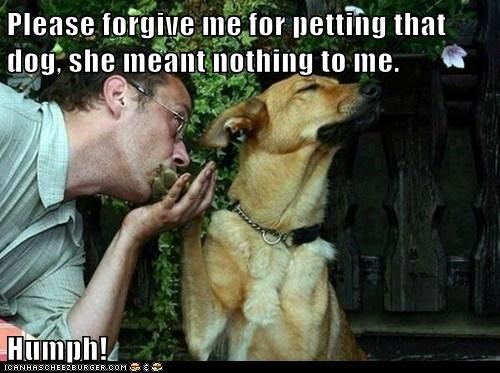
The findings mirror those of studies of 6-month-old babies who had jealous reaction to their moms interacting with a doll, but were less concerned about moms interacting with a book.
Psychologist Christine Harris, who led the study, says she’s been studying jealousy for many years — but in humans.
So what does she think of the dogs?
The fact that these dogs seemed like they were trying to draw their owners away from the stuffed animal indicates that they’re feeling something very similar to human jealousy, Harris says.
But in the end (as convincing as it seems) the study still doesn’t prove that dogs feel jealousy. “The problem is that [the researchers] didn’t look at how dogs would react just to those objects,” Laurie Santos , director of the Canine Cognition Center at Yale University tells NPR. Jealousy is a complex emotion. If we find out that dogs feel the same way, “either jealousy is less complicated because animals show it, or animals are more complicated than we thought.”
While the study might not be conclusive, there is no doubt that whether your call it jealousy, fear or sadness, dogs feel something when someone or something gets in the way of the love and attention they deserve. This site is filled with information helping dogs to adjust to life changes and additions of new family members, be it human, dog or other. Just like with humans, some dogs are likely to feel the pull of emotions greater than others.
My Dog Chases My Cat. How Do I Stop Him?
THE FOLLOWING IS AN EXCERPT FROM PETFINDER.COM’S FURKEEPS KICKOFF LIVE FACEBOOK Q&A.
Q: I have a 2-year-old male Dachshund/Pug mix and in the last four months he has decided that my four cats are perfect for chasing. He has two other dogs to play with, gets plenty of exercise, and still chases my cats. What am I missing? I know doxis have high prey drives, but why did he start chasing the cats in only the last four months?
A: It’s hard to say why you are suddenly seeing this chasing behavior when you never did before. I assume all the cats were residents before your dog got there? Be sure your dog’s exercise regimen is regular and very exhausting. Exercise can often solve a great many issues right off the bat!

There is some inherent reward in the chase behavior, so the more your dog does it, the more well-versed he will become. This can become very serious, so being consistent in redirection and correction of this behavior before it starts over the next few weeks will really be important.
That said, I would also correct him if he gets fully into chase mode because you were not able to catch him in time to redirect him first. If he takes off chasing, you need to be right after him, using your voice as a correction tool. I want him to be immediately aware he has made a bad choice in chasing the kitty because Mom is very upset.
When you catch him, without emotion, put him into a room by himself or into his crate for a few minutes. You don’t need to hold a long grudge against him, but he needs to know that his chasing behavior has a serious consequence. Not only will you not allow it, he will have some time alone if and when he partakes.
If you have done any obedience work with him, use your recall (come, here, etc.) to work on calling him off. You may want to review his recall in contexts easier than cat-chasing at first so you can build a reinforcement history for coming when called. That way, you are likely to be more successful when he is otherwise distracted. This practice will help you outdoors as well with his daily recalls or off-leash behavior.
If you ever taught him a reliable “leave it” command, you can use that in this instance as well. Realistically, this takes lots of practice. He should be practicing lots of “leave its” in other contexts to help him understand what is expected of him so he has the best chance for success with the cat situation.
Always reward calm behavior in the presence of the cats. Any time they walk in and your dog is calm, reward like crazy with tasty tiny treats. This will help him make a nice, positive association with the presence of the cats. It will also help him learn to look to you when the cats are around rather than making his own choices about how best to deal with the cats!
I tend to be a little harsh with cat chasing as I have seen it turn into serious predatory behavior very fast — hence my suggestion for corrective measures in conjunction with the praise and reward for any good behavior that happens along the way!
Good luck!
Leslie Burgard
Dogs Think! Dog Training
Furnace, PA
Q: I have a 1-year-old Lab mix who is constantly chasing my cats. They hide in their little room all the time because they’re scared of him. Occasionally he’s jumped on them and pinned them down. He’s fine with the ferrets. Is there any way to stop this?
A: You can certainly suppress this behavior and eliminate it from your dog’s repertoire. The key is not to allow the dog to practice the behavior.
Chasing is very self-reinforcing for dogs. Basically, it is innately reinforcing. When I work with dogs and cats, I put the dog on a very strict training program, making sure the dog can recall away from any distraction. The dog must also be crated to give the cats time to wander. Lastly, the dog should be wearing a drag line so you can stop him from chasing the cats.
Supervision is critical. You can begin by having the cat in a carrier and permit the dog to be close (not too close) to the cat. Call your dog off the carrier and reward him with something he never gets, but loves. He needs to understand that coming to you is worth his while. Also, if he retrieves, I reward with a retrieve — in other words, I am putting the dog in chase mode, but chasing after the correct object.





